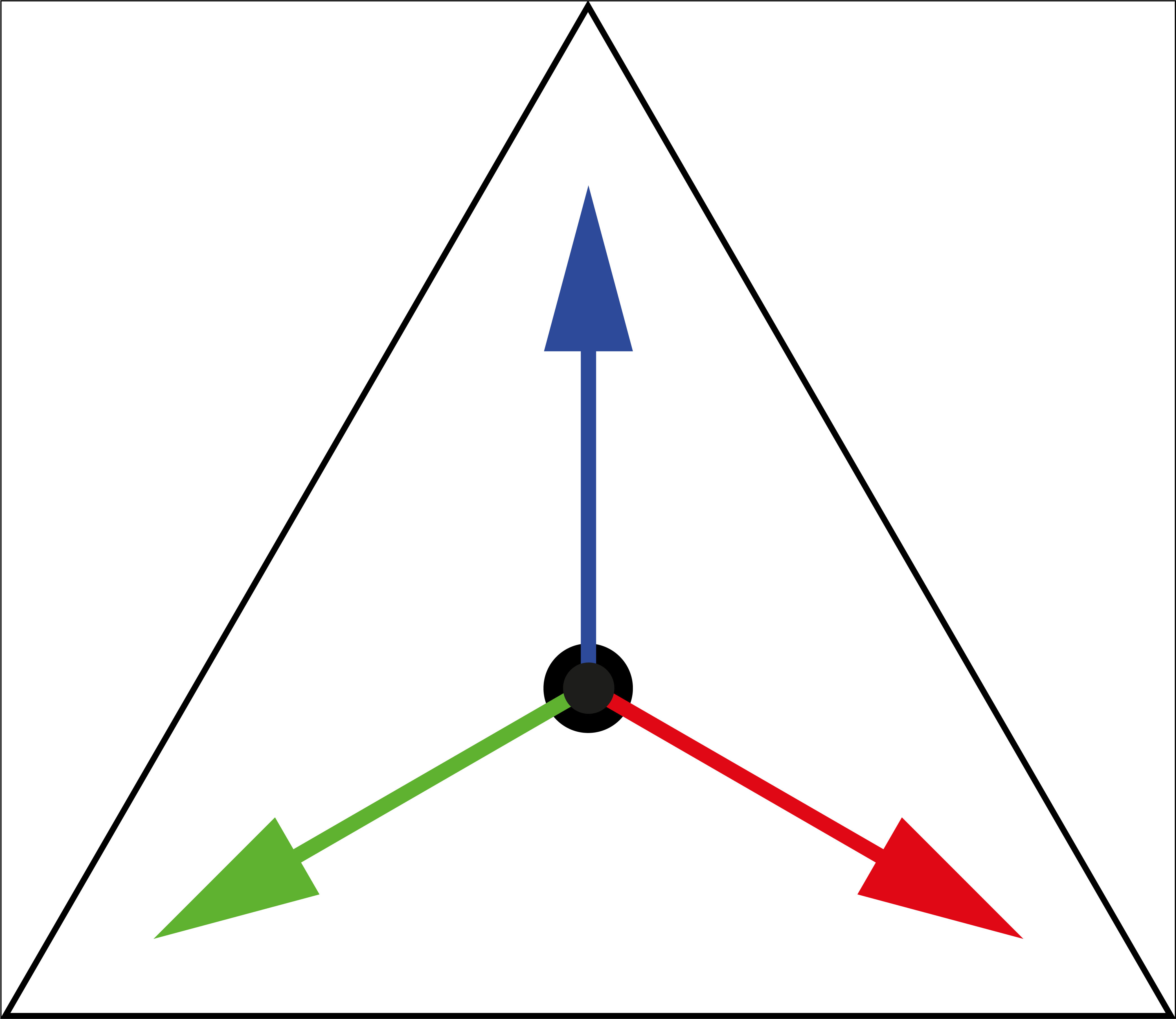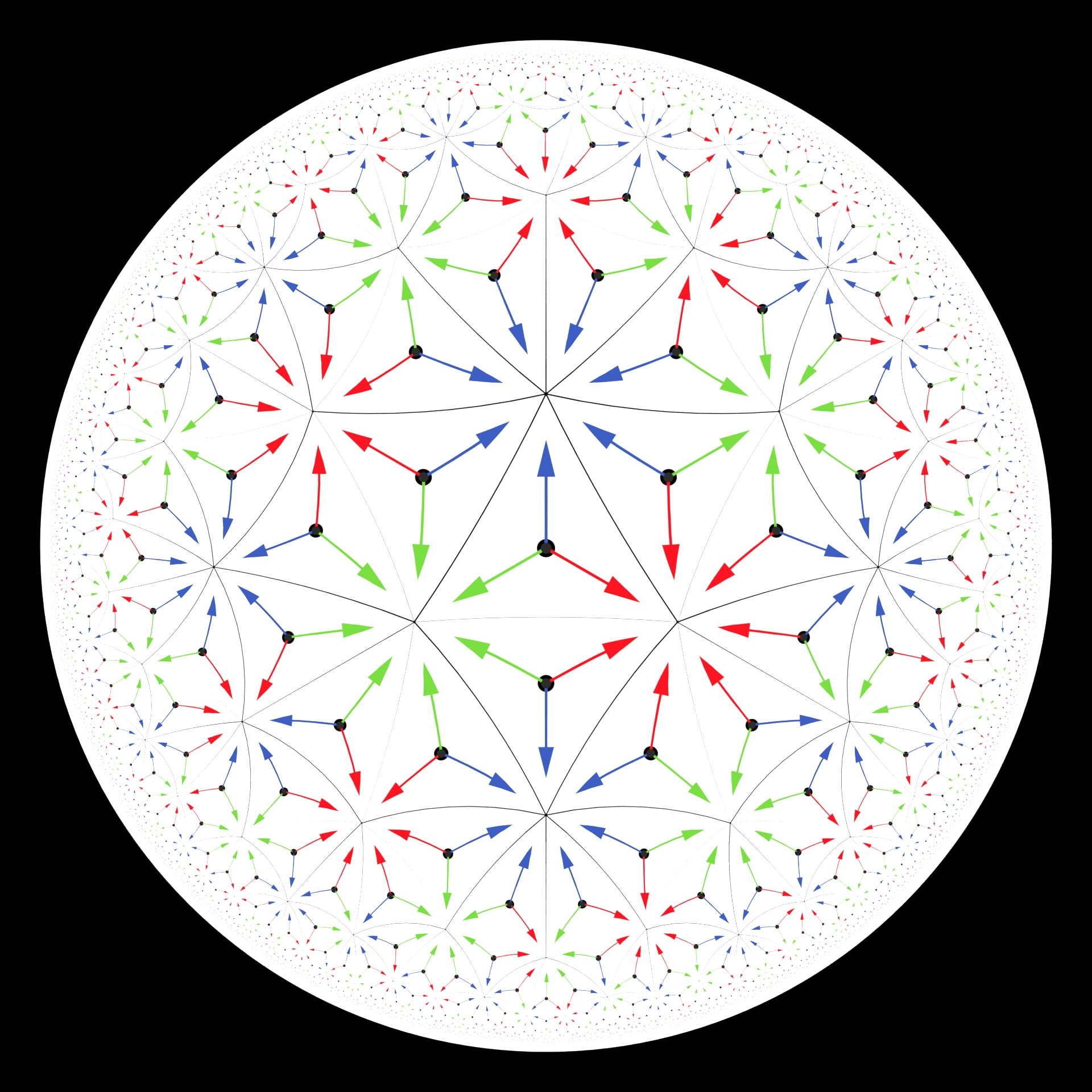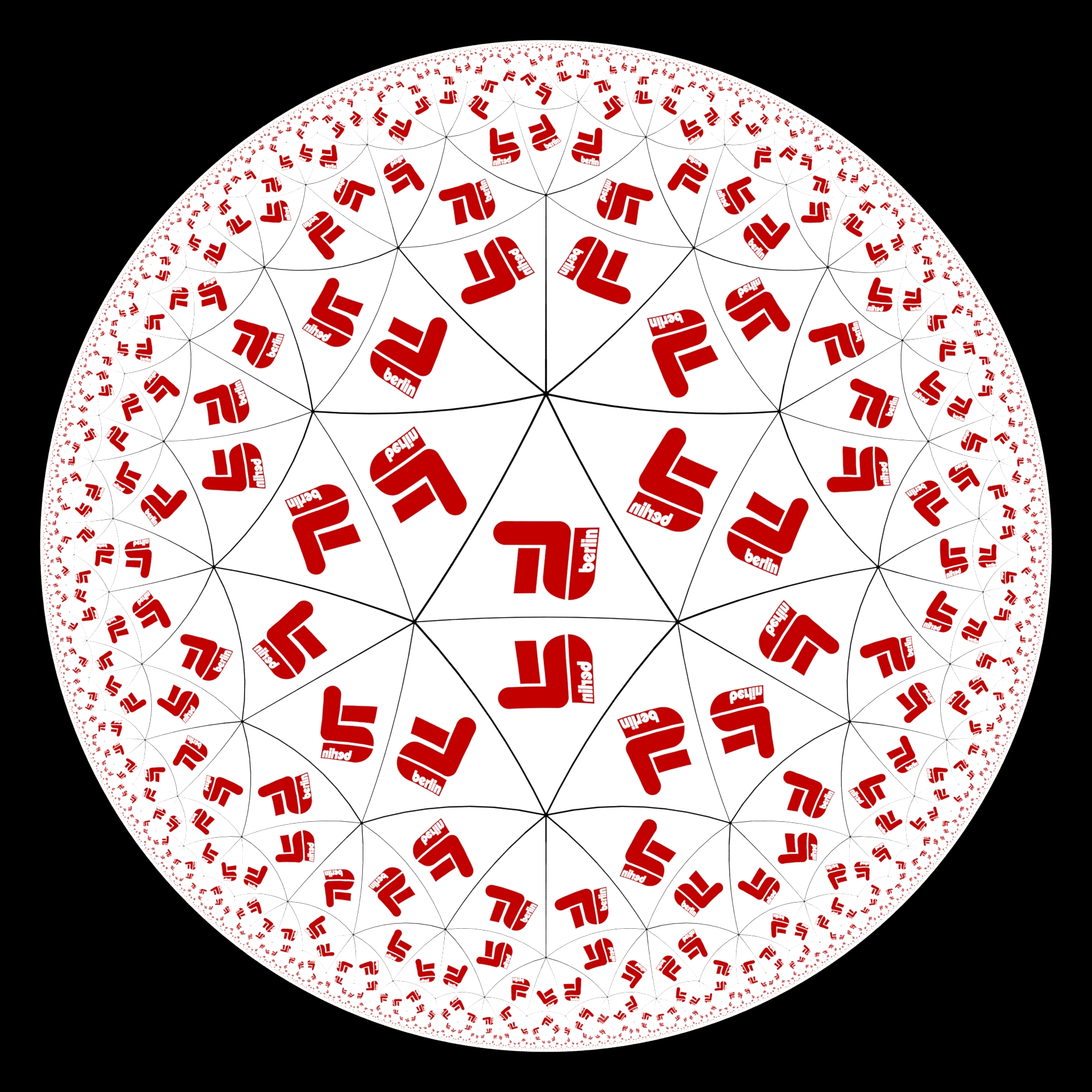Hyperbolic Tiling {3,7}
A private side project by Marcel Padilla - TU Berlin - 2020
Intro
Here are some documentations on my attempt to generate a hyperbolic tiling. The goal was to set up a system where I can use any texture/video to be displayed inside the tiling. With a bit of creativity, we could then make images in the style of M.C. Escher’s circle limit.
Mission Statement

Given any texture of a triangle in the Klein disc model, map it into each triangle of the {3,7} tiling of the Poincaré disk model.

Solution
- Create the basic reference mesh for the tiling
- Create a refined textured mesh of a single tile
- Expand the refined tile using the reference mesh
- Place a circle of constant color behind the tiling for fine details at the edge
- Be aware of floating point issues near the edge
Results
Notice that the arrow’s colors don’t match up everywhere. There is not much freedom when trying to build a seamless pattern.
Using the TU logo we get this:

If we stick to radially symmetric textures, we can get quite fancy. Here is some fitting music. Put this on fullscreen and stare at it for a minute.
The clip placed into each triangle:
Notes
There is already a web version of a good tiling generator, but it does not allow us to place the initial image in the straight Klein model setting. These sources were very inspiring for this work: